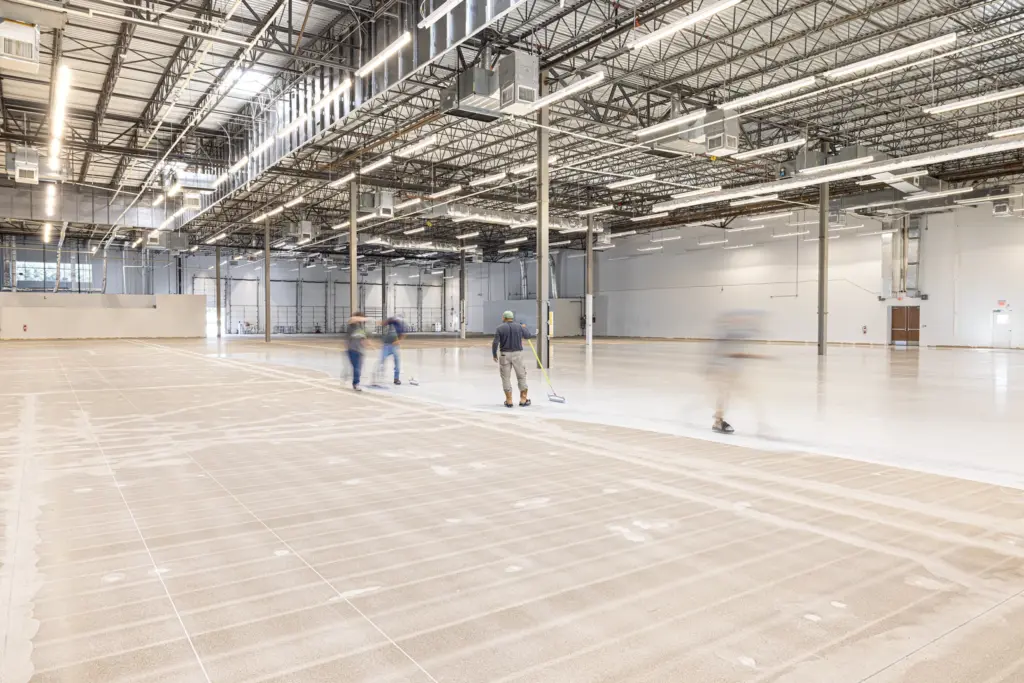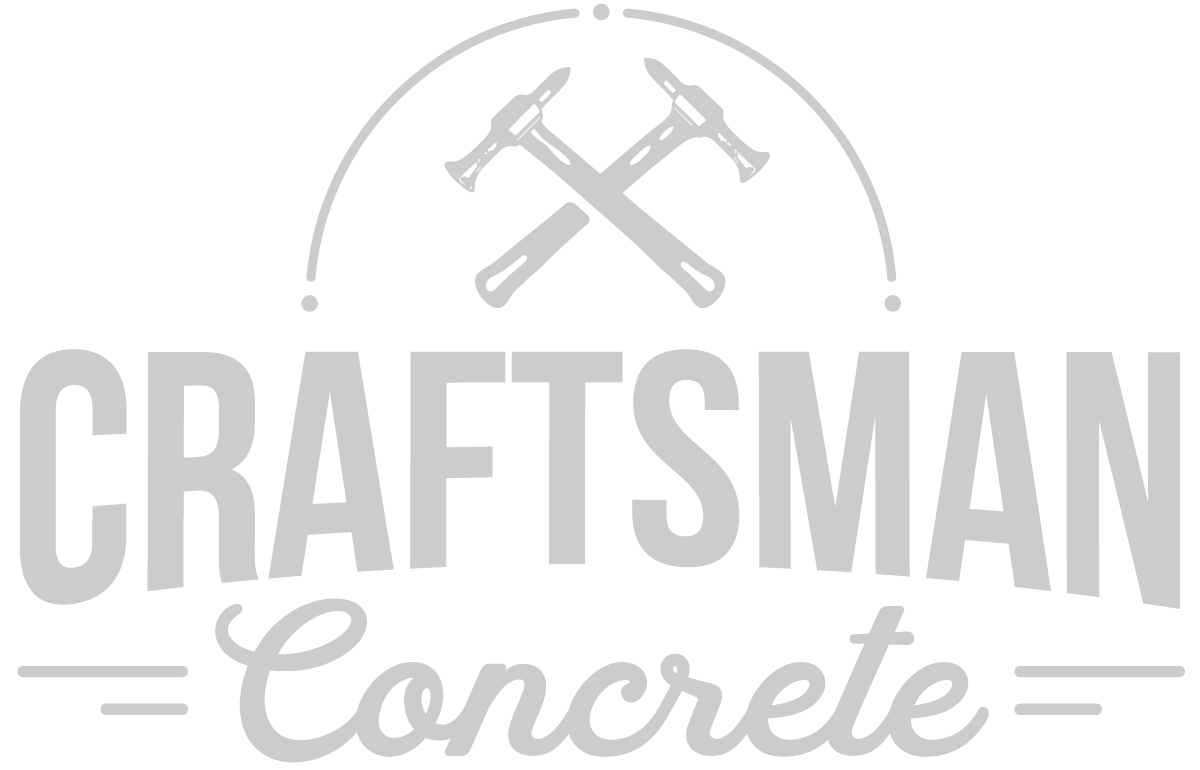Electrostatic Dissipative Coating Installation
Craftsman Concrete Floors specializes in the installation of commercial concrete coatings, including ESD epoxy floors designed to protect sensitive electronic equipment from static electricity buildup. These floors endure extreme conditions and require a long, uninterrupted service life. As one of the largest installers of specialized commercial concrete coatings in the nation, we have the expertise to provide coating systems that offer reliable, long-term static control solutions for builders and technology companies.
Our team includes well-known veterans of the concrete industry with extensive experience in installation, materials manufacturing, and product development. As a testament to our expertise, we are proud to be a manufacturer-certified installer for renowned concrete brands such as MAPEI and Westcoat.
At Craftsman Concrete Floors, our commitment is to environmental sustainability. We know that our customers install concrete flooring to minimize waste and environmental impact. To support this commitment, we power our facilities with 100% renewable energy, use electric cars where possible, and purchase carbon credits to offset the greenhouse gases from our other vehicles.
Discuss your project & Get a Quote
We’re here to guide you through the design of our products. A Concrete Floor Specialist will reach out within one business day.
Why is Static-Control Flooring Needed?
In industries like electronics manufacturing and repair, static electricity poses significant challenges. As employees move about, the friction between their rubber-soled shoes and the floor generates static charges. Since rubber soles create an insulating barrier, these charges remain on the worker until they touch a conductive surface. If that surface happens to be a sensitive electronic component, it can lead to internal circuit failures or irreversible damage. To combat this issue, static-control flooring is installed to effectively dissipate static charges and protect delicate electronic equipment.
How do ESD floors work?
ESD flooring features lower electrical resistance compared to standard flooring, enabling it to effectively conduct static buildup from workers. These materials are typically grounded to a structural piece of steel or a standard earth ground, like the third pin on a 110V electrical outlet. Workers also wear specialized footwear designed to create a grounding path around the rubber soles of their shoes.
ESD flooring serves two primary functions: dissipating electrostatic discharge and reducing the accumulation of static electricity. While some flooring types, such as carpet, can contribute to increased static buildup, others, like epoxy or vinyl ESD floors, help prevent it, making them ideal choices for environments sensitive to electrostatic discharge.
To learn more about ESD Floors, Visit our ‘ESD Floor Installation‘ page
Our Clients




















Epoxy Services We Offer
Different types of ESD flooring
There are various types of ESD flooring, with higher-priced options typically offering superior static control performance and increased durability.
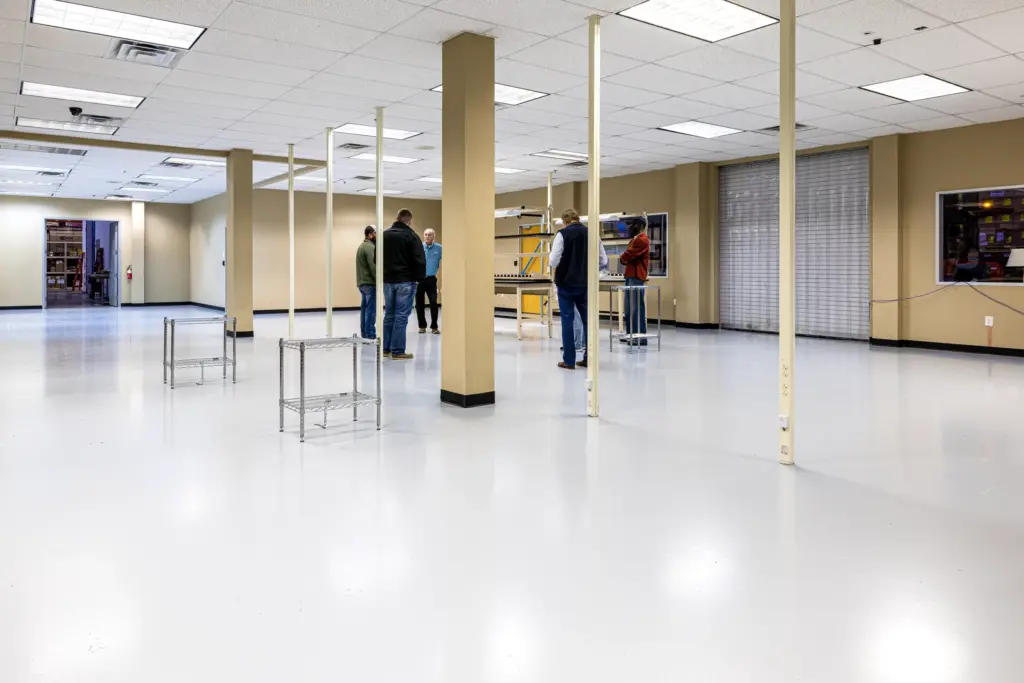
ESD Epoxy and Polyurethane
ESD epoxy and polyurethane are the premier solutions for electrostatic discharge flooring in commercial settings. These coatings are infused with copper and carbon to create a continuous, conductive surface. They also feature embedded copper strip conductive elements with multiple grounding points, providing additional safety for users. Both ESD epoxy and polyurethane boast high chemical resistance, a long service life, and exceptional protection against static electricity. If you seek the highest level of ESD protection, these coatings are your best solution.
Pros
- High durability
- Excellent electrostatic discharge performance
Cons
- Higher upfront cost
- Requires specialized installation by a commercial contractor
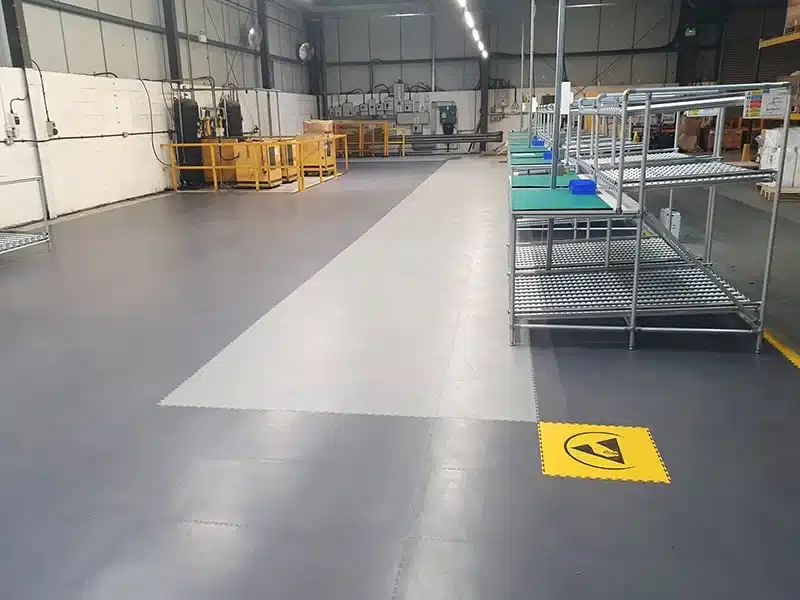
ESD Rubber Tiles
ESD rubber tiles are another industry standard for electrostatic discharge protection. They resemble vinyl composition tile (VCT) but do not require waxing, making them a low-maintenance option. These tiles feature a common conductive copper rail installed beneath them to ensure redundant grounding. For applications needing a seamless, monolithic surface, ESD rubber tiles can be heat-welded for a better finish.
Pros
- High electrostatic discharge performance
- Impact resistant
- Incorporates common conductive elements
Cons
- Requires specialized installation by a commercial contractor
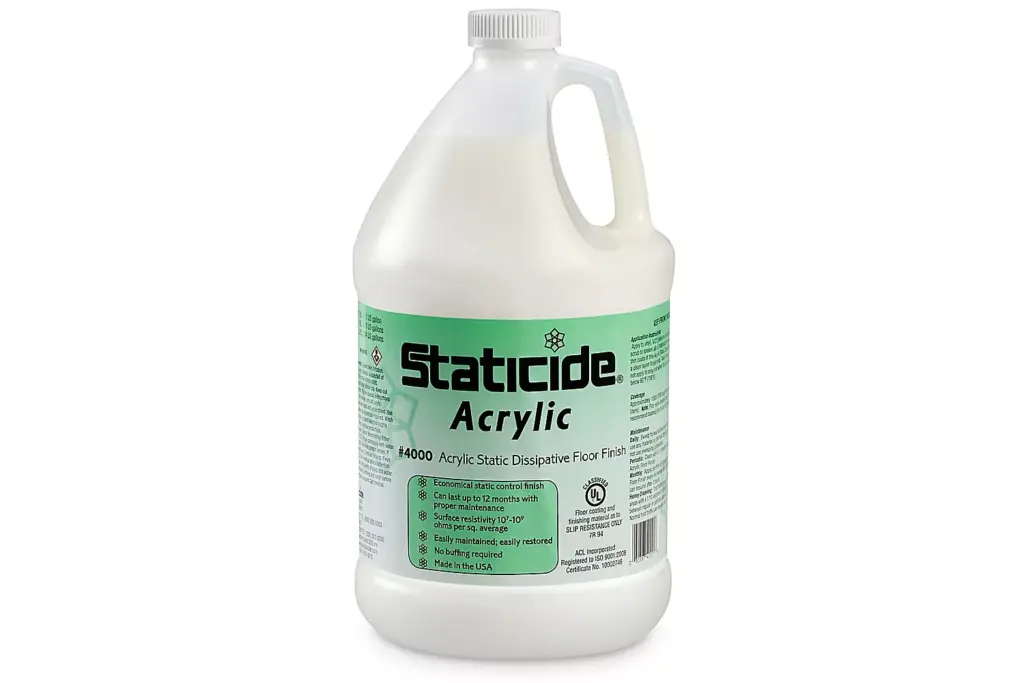
ESD Floor Wax
ESD floor wax is a budget-friendly solution for converting non-ESD flooring into ESD-compatible surfaces. It can be applied over concrete and various types of tile, and some ESD flooring tiles may also benefit from its use. However, it’s important to note that ESD floor wax does not create a true conductive floor; it falls into the category of higher resistance, “dissipative” floors. Without an embedded ground strip, it relies on the overall surface area of the material to dissipate static charges, resulting in lower performance compared to other ESD flooring options.
Pros
- Easy to install
- Readily available from vendors such as Uline
- Can convert traditional flooring materials to ESD-compatible surfaces
Cons
- Low ESD performance
- Requires frequent maintenance
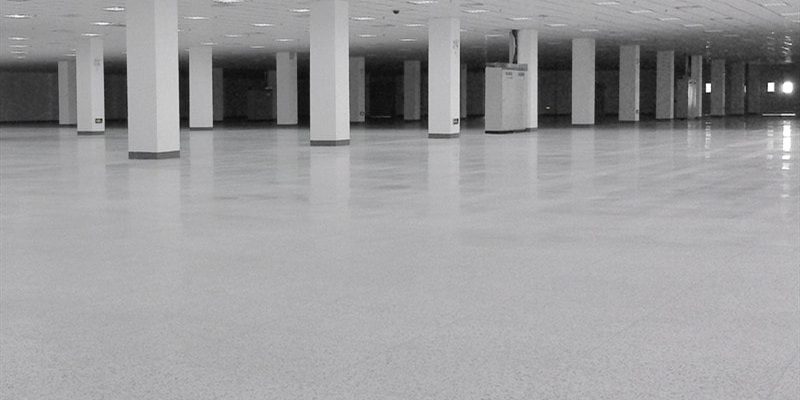
ESD Vinyl Tile
ESD vinyl tiles offer a mid-level solution that strikes a balance between price and performance in various applications. With a low upfront cost, they are easier to install than many other preferred static control flooring options. However, it’s important to note that these tiles are not weldable, which means they do not create a seamless, monolithic floor. This characteristic introduces potential failure points that may be difficult to detect after installation, posing risks in sensitive environments like data centers.
Pros
- Low upfront cost
- Easier installation than many other ESD flooring options
- Suitable for various applications
Cons
- Not weldable, leading to a non-monolithic surface
- Potential for undetectable failure points after installation
- May not provide adequate protection in high-stakes environments, such as data centers
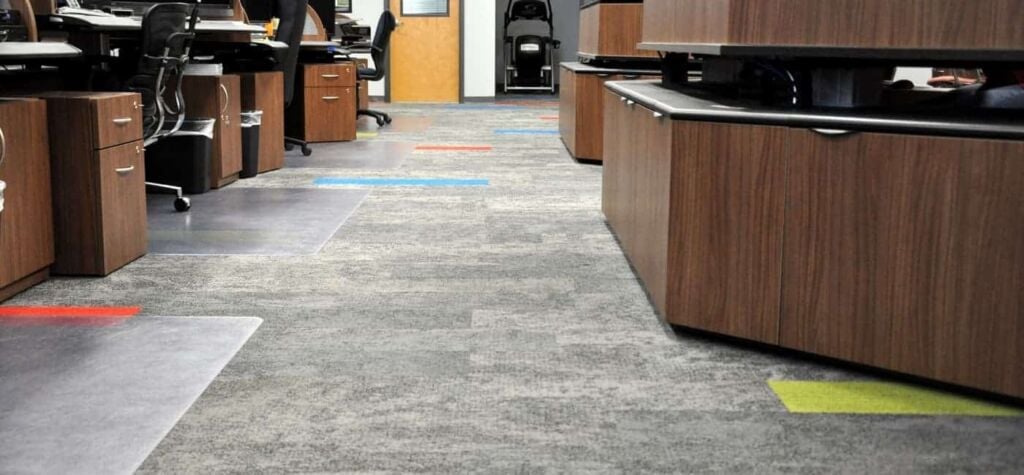
ESD Carpet
ESD carpet is an excellent choice for environments where high-frequency sound dampening is essential, such as broadcasting studios, air traffic control centers, and office spaces. These carpets come in various conductivity grades and can be either grounded or ungrounded. Ungrounded systems are often preferred for comfort, as they help minimize the risk of electrical discharge when touching doorknobs in colder months. Grounded systems provide performance comparable to ESD epoxy or rubber tiles but often at a higher cost.
Pros
- Excellent sound dampening properties
- Familiar and comfortable aesthetic for workplace environments
- Available in various conductivity grades
Cons
- High upfront cost compared to other ESD flooring options
- Shorter service life compared to more durable flooring materials
- Less tolerant to heavy traffic and loads, which may lead to quicker wear and tear
Visit ‘Project Highlight: 67,000 sq. ft. ESD Epoxy in Houston, Texas‘
what type of ESD flooring is right for your project?
To choose the right ESD flooring, consider the required level of protection, expected traffic volume, and desired service life. At Craftsman Concrete Floors, we specialize in installing ESD flooring tailored to your needs. Contact us for a free consultation!
See our team At Work installing ESd Flooring
Blog
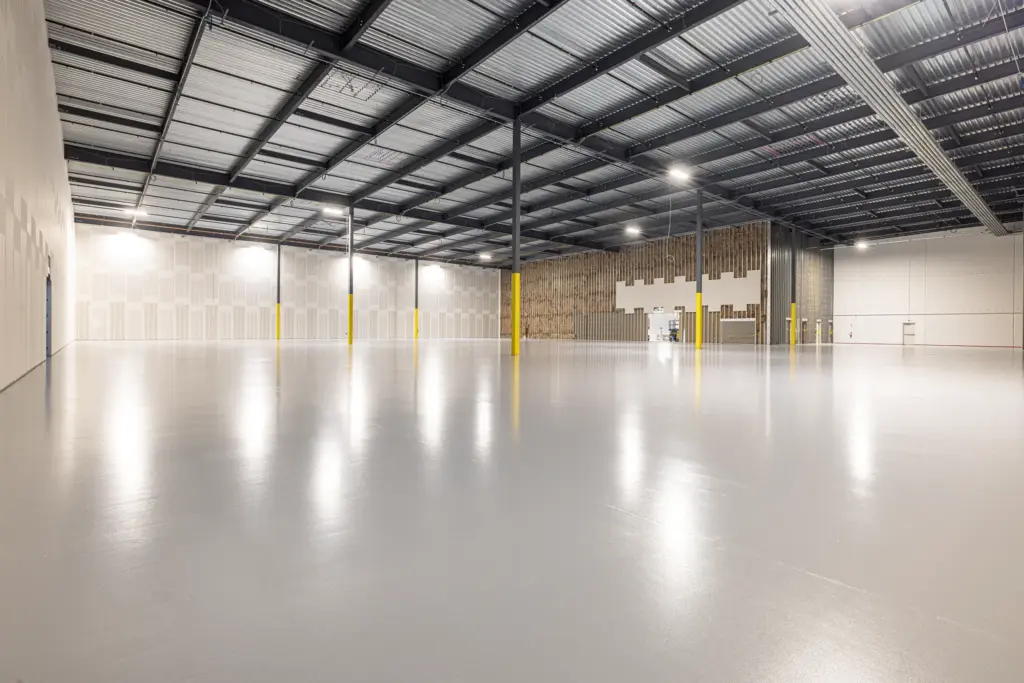
Project Highlight: 34,000 Sq. Ft. ESD Epoxy Installation in Dallas, Texas
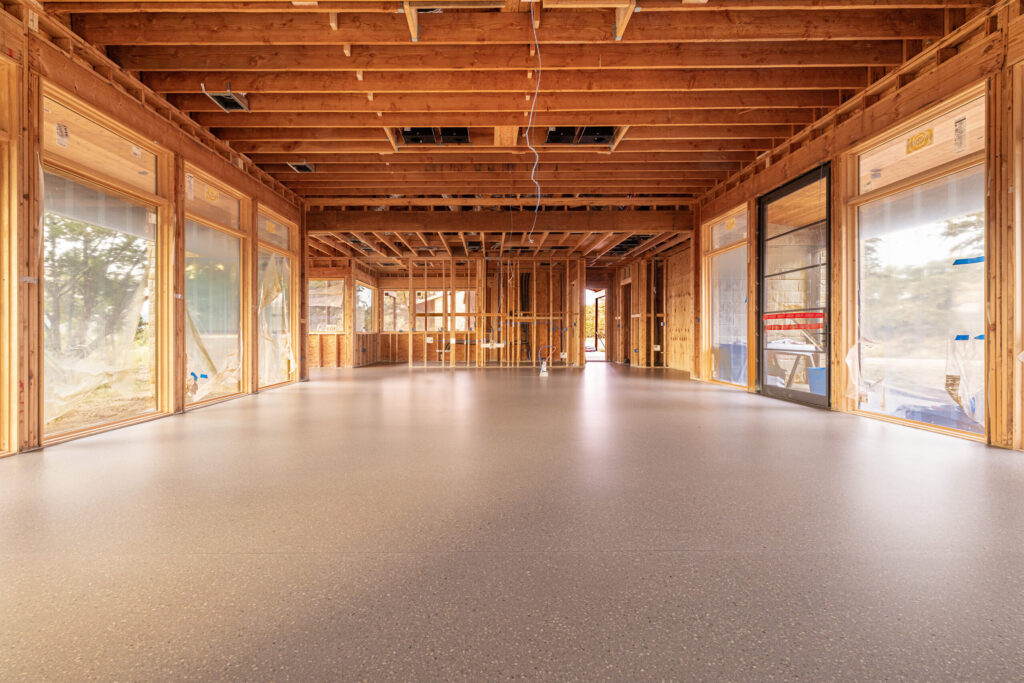
Project Highlight: New Residential Terrazzo Floors in Fort Worth, Texas
